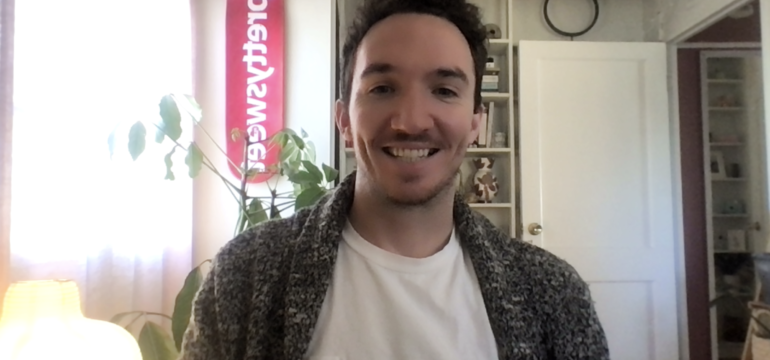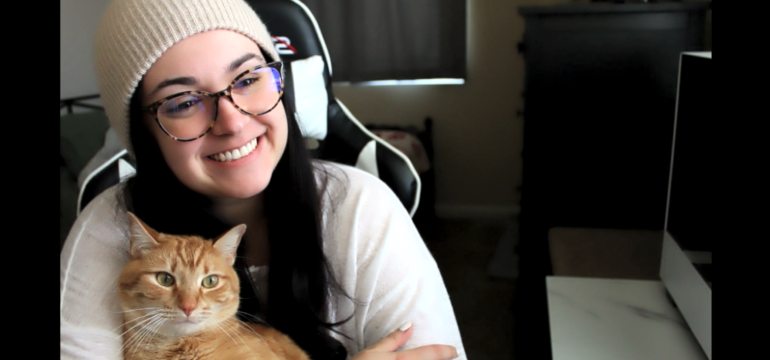To get to know the people behind Look Listen, we’re breaking down our name to see what inspires and captivates our staff members in their free time.
Name: Ben Dunn
Title: Web Developer
Time with LL: ~50 days
Pronouns: He/Him
What are you looking at?
Always something! I love to be looking at screens. Lately, on TV I’ve been watching Severance and the new season of Atlanta! On computer, I’m looking at either VSCode, Dead by Daylight or some extremely stupid Twitch streams. When I’m not looking at my beloved screens I like to look at alt-comics and zines! I’ve really been enjoying Nate Garcia’s work on his Alanzo Sneak comics, I just ordered some new issues of Ohio is for Sale from Jon Allen, and just finished Alex Graham’s Dog Biscuits, which was an ongoing story he updated daily with full page entries from the start of the pandemic in 2020 until early 2021! It’s a pretty amazing artistic feat, not to mention an interesting time capsule of a very crappy time in all of our lives! Fun!
What are you listening to?
When I’m working, I like to keep it simple and I tend to gravitate toward synthesizer music for coding. I like (for example) Mort Garson, Tedd Terje and CASIOPEA for that sort of thing. Off hours I listen to so many things. I’ll just name some random artists to illustrate that: Antonio Carlos Jobim, Steely Dan, Remi Wolf, Beach Bunny, Poppy, Polo & Pan, St. Vincent, Tchaikovsky, Yaeji… I’m all over the place. Oh and I like stupid podcasts with no educational value whatsoever like Your Kickstarter Sucks or Doughboys.
Read more








 |
| 


